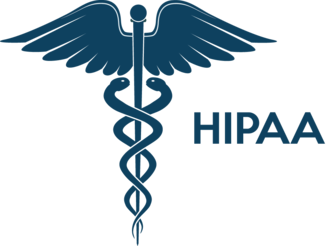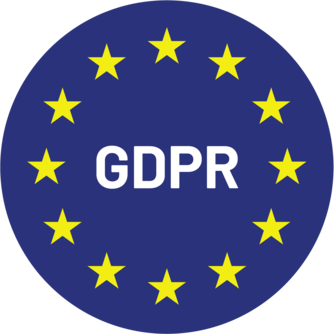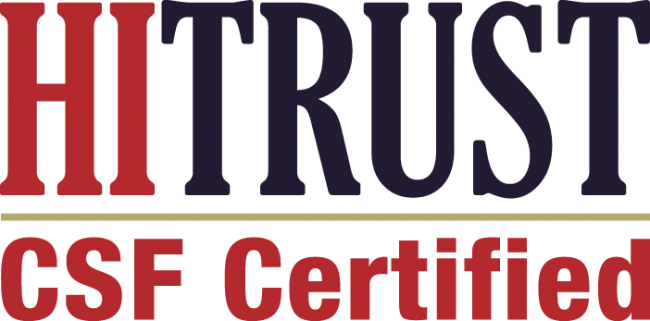Hospital readmissions remain one of healthcare’s most persistent and costly challenges. Hospital readmissions within 30 days of discharge account for over $41 billion in annual healthcare costs, according to the Agency for Healthcare Research and Quality. Beyond the financial burden on healthcare systems, readmissions often signal gaps in post-discharge care that can compromise patient recovery and well-being.
Nearly 1 in 5 patients discharged from the hospital are readmitted within 30 days, creating a cycle that strains both patients and healthcare resources. Remote Patient Monitoring (RPM) has emerged as a powerful solution to this problem, leveraging technology to extend clinical care beyond hospital walls and into patients’ homes.
The evidence is compelling: healthcare institutions implementing RPM experienced a substantial 38% decrease in admissions, a notable 25% enhancement in patient satisfaction, and recorded a commendable 25% reduction in costs. Let’s explore five specific ways RPM achieves these remarkable outcomes.
1. Early Detection of Health Deterioration
The most critical advantage of RPM is its ability to catch warning signs before they become emergencies. Traditional post-discharge care relies on scheduled appointments and patient-initiated contact when symptoms worsen. RPM fundamentally changes this reactive model to a proactive one.
Through continuous monitoring of vital signs, blood pressure, heart rate, oxygen saturation, weight, and blood glucose, RPM systems can detect subtle changes that may indicate an impending health crisis. For patients with congestive heart failure (CHF), a weight gain of just a few pounds can signal dangerous fluid retention. For COPD patients, declining oxygen levels may indicate an approaching exacerbation.
Telemedicine patients were 76% less likely to be readmitted to hospital within six months and 41% less likely to attend A&E, compared to those who followed normal care pathways, according to research from Imperial College London involving heart attack patients. This dramatic reduction stems from the system’s ability to identify problems early and intervene before hospitalization becomes necessary.
The technology enables healthcare providers to monitor patients continuously rather than relying on periodic snapshots during office visits. When readings fall outside predetermined safe ranges, alerts notify care teams immediately, allowing for timely intervention through medication adjustments, lifestyle counseling, or urgent appointments.
2. Improved Management of Chronic Conditions
Chronic diseases drive the majority of hospital readmissions, with certain conditions presenting particularly high risks. CHF has the highest 30-day rehospitalization rate among medical and surgical conditions, accounting for 26.9% of the total readmission rate. For patients over 65, heart failure remains the leading cause of both admission and readmission.
RPM has demonstrated exceptional results in managing these high-risk chronic conditions. RPM decreased the frequency of all-cause hospitalizations for participating COPD patients by 65% and decreased emergency room visits by 44.3%, according to one study. The regular tracking of symptoms and vital signs helps patients and providers understand disease patterns and respond to changes before they escalate.
For diabetes patients, continuous glucose monitoring and blood pressure tracking provide real-time insights that enable precise medication management and lifestyle modifications. The data collected over weeks and months reveals trends that might be invisible during brief clinical encounters, allowing for more personalized and effective care plans.
A comprehensive study on heart failure patients found equally impressive results. The odds of the patient experiencing a hospital admission in a given month were 23% lower for members enrolled in the telemonitoring program. The odds of experiencing a 30-day readmission were 44% lower. These reductions translate to better quality of life for patients and significant cost savings for healthcare systems.
3. Enhanced Patient Education and Engagement
RPM does more than collect data; it transforms patients from passive recipients of care into active participants in their health management. The technology serves as a daily reminder and motivator for patients to take ownership of their well-being.
When patients regularly check their vital signs, they become more aware of how their behaviors affect their health. They can see immediate feedback when medication adherence improves their readings or when dietary choices impact their weight and blood pressure. This real-time feedback loop reinforces positive behaviors and helps patients understand the consequences of their decisions.
Research on high-risk post-discharge patients showed remarkable engagement. At 3 months after intervention, average hospitalizations decreased from 0.45 to 0.19, and average ED visits decreased from 0.48 to 0.06. The dramatic reduction in emergency department visits suggests patients were better equipped to manage minor concerns at home rather than seeking emergency care.
RPM platforms often include educational content tailored to each patient’s conditions, providing guidance on symptom management, medication schedules, and when to seek help. Video consultations enable patients to discuss concerns with their care teams without the stress and expense of traveling to appointments, making healthcare more accessible and reducing barriers to communication.
4. Continuous Care Coordination and Support
Hospital readmissions often occur because of fragmented care during the vulnerable transition period after discharge. Patients may be confused about medication changes, unclear about warning signs to watch for, or unable to secure timely follow-up appointments. RPM bridges these dangerous gaps by maintaining continuous connection between patients and their care teams.
Care coordinators can monitor dozens of patients simultaneously through centralized dashboards that highlight concerning trends or missed readings. This allows efficient allocation of resources, with the most attention directed to patients showing signs of deterioration while stable patients continue their monitoring routines with minimal intervention.
The hospital readmission rate before implementing RPM was 54%, with 53 separate readmissions across 14 patients totaling 334 hospital days. However, after integrating RPM, the readmission rate dropped significantly to 23%, with only 7 readmissions among 6 patients totaling just 37 hospital days. This dramatic transformation in patients with left ventricular assist devices demonstrates the power of continuous monitoring and support.
The coordination extends beyond monitoring to include medication management, appointment scheduling, and rapid response to patient concerns. When patients can reach their care team through secure messaging or video calls, they’re less likely to default to emergency department visits for non-urgent issues.
5. Data-Driven Clinical Decision Making
Perhaps the most transformative aspect of RPM is the wealth of objective data it provides to clinicians. Rather than relying on patients’ recall of symptoms during brief appointments or making decisions based on single data points, providers can review weeks of continuous measurements to identify patterns and make more informed decisions.
The predictive power of this longitudinal data is substantial. Studies have shown that machine learning algorithms analyzing RPM data can predict 30-day readmissions with greater accuracy than traditional models that only use information available at discharge. This allows care teams to identify and intensively support the highest-risk patients.
According to the University of Pittsburgh Medical Center, RPM helped to reduce its readmission rate by 76%. Success stories like this demonstrate how comprehensive data analysis enables healthcare systems to fundamentally redesign their approach to post-discharge care.
The data also supports continuous quality improvement efforts. Healthcare organizations can analyze aggregated data to identify which interventions are most effective, which patient populations benefit most from RPM, and where additional support resources should be directed. This evidence-based approach to program refinement ensures that RPM initiatives continue to improve over time.
The Financial and Human Impact
The business case for RPM extends far beyond reducing readmission penalties. The estimated return on investment associated with the telemonitoring program was approximately 3.3x, which means that for every $1 the health plan spent on the program, it experienced a $3.30 cost-savings benefit. This impressive ROI comes from reduced emergency visits, shorter hospital stays when admission is necessary, and prevention of costly complications.
But the most important metrics can’t be measured in dollars. Patients report feeling more secure knowing their health is being monitored, experiencing less anxiety about their conditions, and appreciating the convenience of managing their health from home. University of Pittsburgh Medical Center also reported their patient satisfaction scores rose to over 90% because they equipped patients with remote patient monitoring equipment and tablets.
For elderly patients, those with mobility challenges, or people living in rural areas, RPM removes significant barriers to receiving quality care. The technology democratizes access to specialist oversight and continuous monitoring that might otherwise be available only to those with easy access to major medical centers.
Looking Forward
The adoption of RPM continues to accelerate. By the year 2025, more than 26%, or around 71 million Americans, will be utilizing some type of remote patient monitoring service. As technology improves, devices become more user-friendly, and reimbursement models increasingly support remote care, RPM will become a standard component of chronic disease management.
The integration of artificial intelligence and machine learning promises to make RPM even more powerful, with algorithms that can predict exacerbations earlier and recommend personalized interventions. Wearable devices are becoming less obtrusive and more capable, and integration with electronic health records is making the data more actionable for clinicians.
Conclusion
Hospital readmissions represent a critical challenge at the intersection of quality of care, patient experience, and healthcare costs. Remote Patient Monitoring addresses this challenge through five key mechanisms: early detection of health deterioration, improved chronic disease management, enhanced patient engagement, continuous care coordination, and data-driven clinical decisions.
The evidence supporting RPM’s effectiveness is substantial and growing. From 76% reductions in readmissions for cardiac patients to 65% decreases in hospitalizations for COPD patients, the technology is proving its value across multiple chronic conditions and care settings.
As healthcare continues its shift toward value-based care models, RPM represents not just a technological innovation but a fundamental reimagining of how we support patients in their most vulnerable moments, the critical weeks after hospital discharge. By extending clinical oversight into patients’ homes and empowering both patients and providers with continuous data and communication channels, RPM is helping to close the gaps that too often lead patients back to the hospital.
For healthcare organizations looking to improve outcomes, reduce costs, and enhance patient satisfaction, the question is no longer whether to implement RPM, but how quickly they can scale these programs to reach all patients who could benefit from this life-changing technology.






